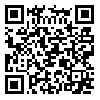BibTeX | RIS | EndNote | Medlars | ProCite | Reference Manager | RefWorks
Send citation to:
URL: http://tumj.tums.ac.ir/article-1-47-en.html
Background: The relationship between season of birth and human diseases is well known and such a relationship could be mediated by seasonal and environmental effects on early events of extrauterine life Empirical neonatological experience suggests that prevalence and degree of neonatal jaundice might be dependent on seasonal variation, mainly due to the sunshine duration. However, evidence based data on this issue are scarce. Thus, we have analyzed the seasonal effect on the rise of serum bilirubin level during the neonatal period.
Methods: A prospective cohort study was done on a sample of 629 term and healthy infants born consecutively in Shariati Hospital, Tehran, Iran, during the years 2008-2009. The cord bilirubin level and then the serum bilirubin level near to 48 hour of age were measured. Seasonal differences in rise of serum bilirubin were studied.
Results: Rise of serum bilirubin in spring was 3.951.4 mg/dl, in summer 3.761.69 mg/dl, in fall 3.511.60 mg/dl and in winter 4.791.99 mg/dl. Serum bilirubin level in cord blood did not appear to be correlated with season of birth. After correction for the possible effect of these variables the relation between season of birth and rise of serum bilirubin remained significant. The rise of serum bilirubin in winter was significantly higher than other season (P<0.0001).
Conclusion: Season acts as an independent etiological factor of neonatal hyperbilirubinemia. Mean rise of serum bilirubin in winter is higher than other season. This provided information to improve education for nurses in identifying risk factors and the prevention of hyperbilirubinemia readmissions.
| Rights and permissions | |
 |
This work is licensed under a Creative Commons Attribution-NonCommercial 4.0 International License. |





